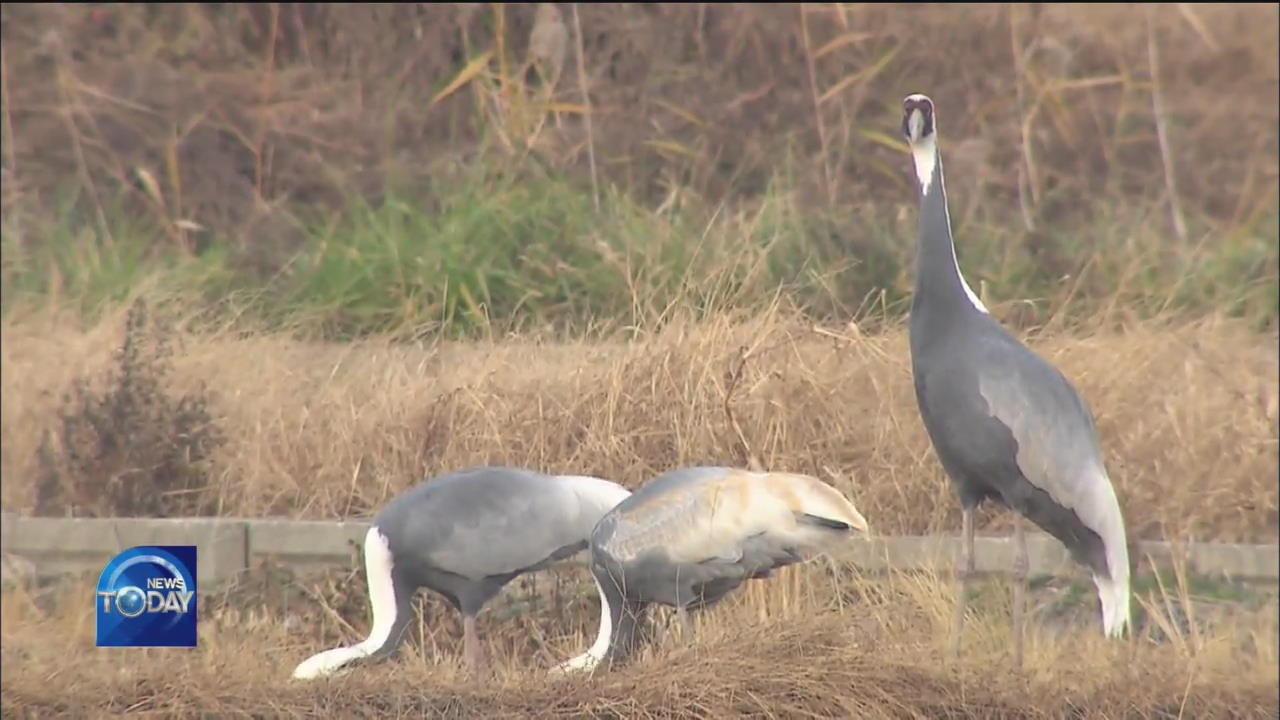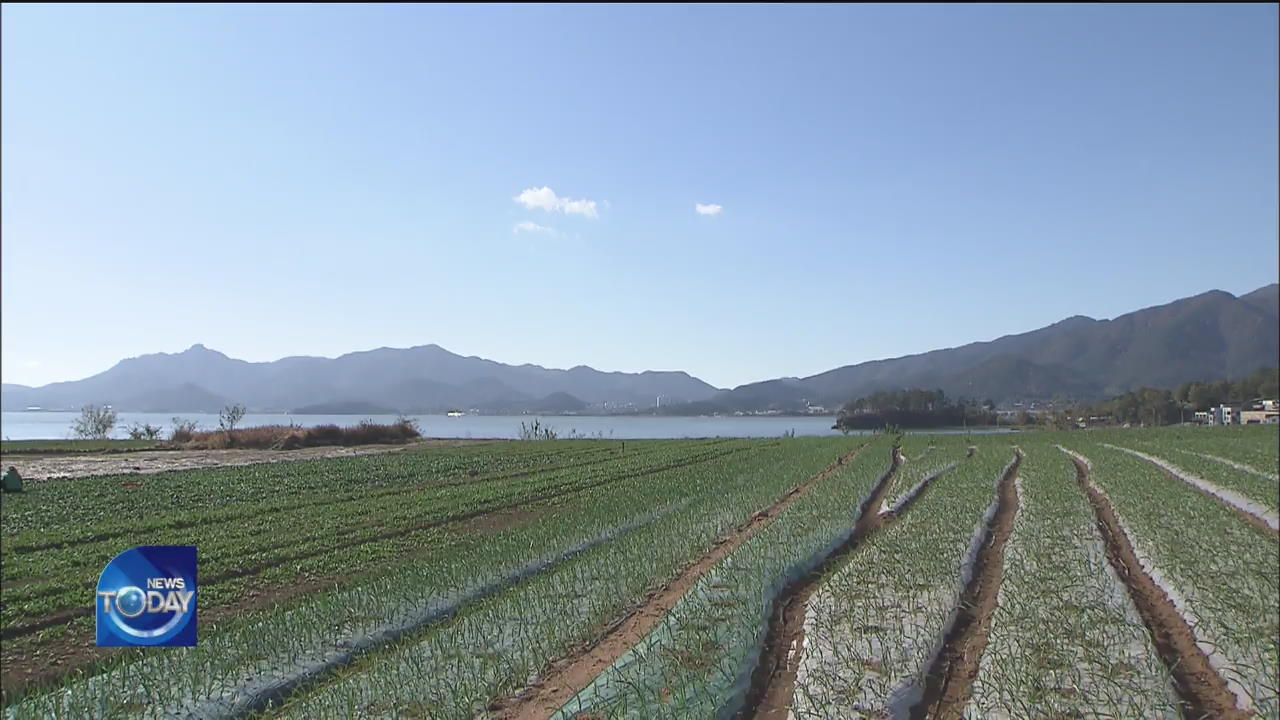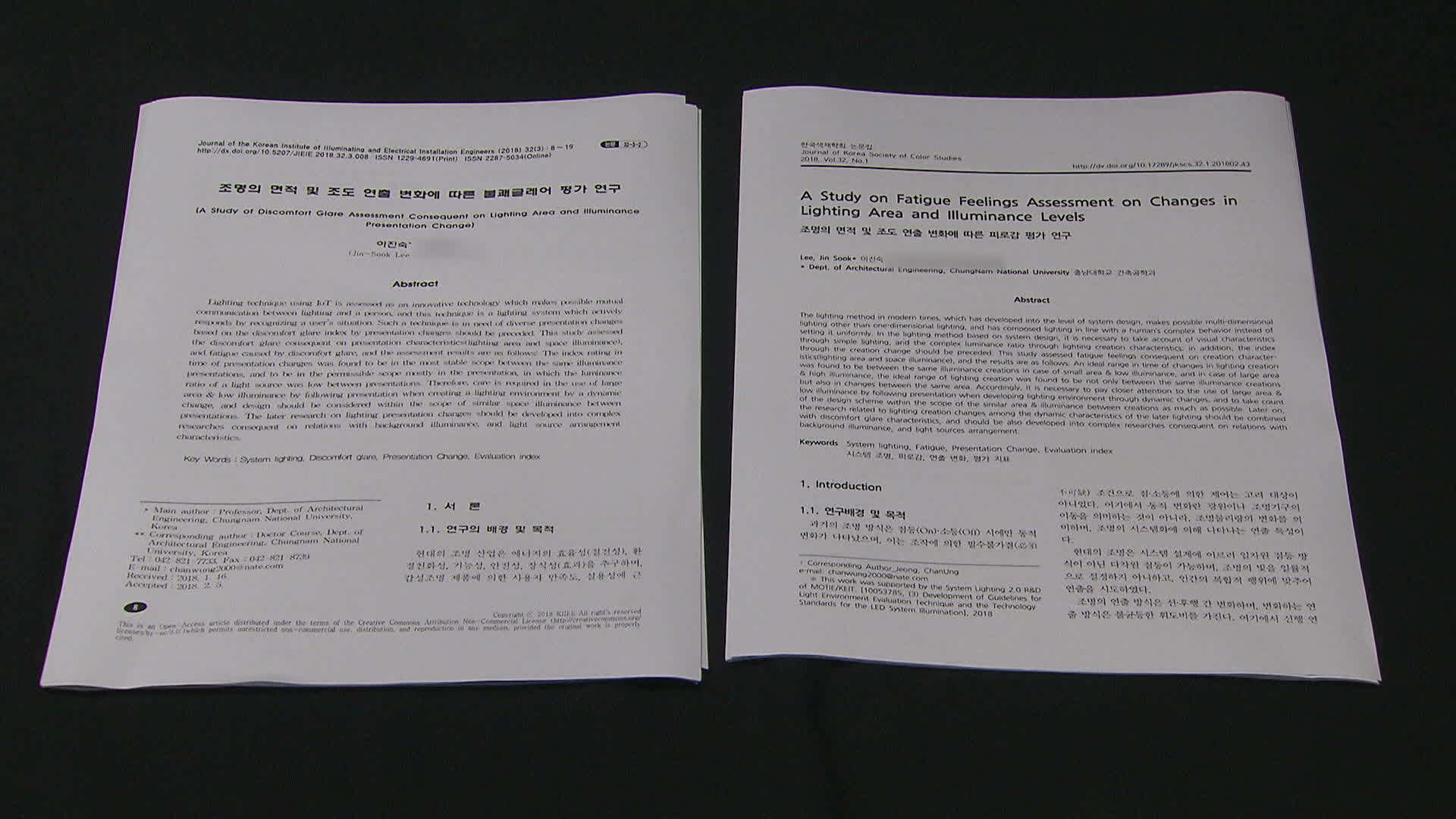ENDANGERED CRANES DUE TO URBAN DEVELOPMENT
입력 2019.11.15 (15:13)
수정 2019.11.15 (16:45)
읽어주기 기능은 크롬기반의
브라우저에서만 사용하실 수 있습니다.
[Anchor Lead]
The Hangang River estuary is home to white-naped cranes, an endangered species whose population currently stands at only six thousand. However, the birds may soon disappear from the area, as farm land where they find food has been destroyed due to urban development.
[Pkg]
White-naped cranes have visited a rice paddy, where harvesting is now over. An endangered wild species of category 2, these birds have large circles of bare, red skin around their eyes, and stand 120 centimeters tall. While the mother-crane and her chick are eating, the father-crane keeps looking around. Seeing white-naped cranes in an urban area is quite uncommon.
[Soundbite] (LOCAL RESIDENT) : "I haven't seen many of them. I spot them from time to time. Almost never."
After eating rice grains, the birds fly over to an uninhabited island in the Hangang River estuary about two kilometers away to drink some water and catch small fish and freshwater crabs. This area offers ideal conditions for migratory birds from Siberia.
[Soundbite] YOON SUN-YOUNG(KOREAN ASSOCIATION OF WILD BIRDS PROTECTION) : "Migratory birds from East Asia stay in the Hangang River estuary before flying to other parts of the Korean Peninsula."
Up until two decades ago, this area was visited by more than 120 white-naped cranes, but this year there are only 30 of them. They have less food to eat these days, as rice fields keep disappearing as a result of urban sprawl. Measures are urgently needed to find ways to preserve the habitat of these rare birds, which have a strong homing instinct.
The Hangang River estuary is home to white-naped cranes, an endangered species whose population currently stands at only six thousand. However, the birds may soon disappear from the area, as farm land where they find food has been destroyed due to urban development.
[Pkg]
White-naped cranes have visited a rice paddy, where harvesting is now over. An endangered wild species of category 2, these birds have large circles of bare, red skin around their eyes, and stand 120 centimeters tall. While the mother-crane and her chick are eating, the father-crane keeps looking around. Seeing white-naped cranes in an urban area is quite uncommon.
[Soundbite] (LOCAL RESIDENT) : "I haven't seen many of them. I spot them from time to time. Almost never."
After eating rice grains, the birds fly over to an uninhabited island in the Hangang River estuary about two kilometers away to drink some water and catch small fish and freshwater crabs. This area offers ideal conditions for migratory birds from Siberia.
[Soundbite] YOON SUN-YOUNG(KOREAN ASSOCIATION OF WILD BIRDS PROTECTION) : "Migratory birds from East Asia stay in the Hangang River estuary before flying to other parts of the Korean Peninsula."
Up until two decades ago, this area was visited by more than 120 white-naped cranes, but this year there are only 30 of them. They have less food to eat these days, as rice fields keep disappearing as a result of urban sprawl. Measures are urgently needed to find ways to preserve the habitat of these rare birds, which have a strong homing instinct.
■ 제보하기
▷ 카카오톡 : 'KBS제보' 검색, 채널 추가
▷ 전화 : 02-781-1234, 4444
▷ 이메일 : kbs1234@kbs.co.kr
▷ 유튜브, 네이버, 카카오에서도 KBS뉴스를 구독해주세요!
- ENDANGERED CRANES DUE TO URBAN DEVELOPMENT
-
- 입력 2019-11-15 15:07:15
- 수정2019-11-15 16:45:29

[Anchor Lead]
The Hangang River estuary is home to white-naped cranes, an endangered species whose population currently stands at only six thousand. However, the birds may soon disappear from the area, as farm land where they find food has been destroyed due to urban development.
[Pkg]
White-naped cranes have visited a rice paddy, where harvesting is now over. An endangered wild species of category 2, these birds have large circles of bare, red skin around their eyes, and stand 120 centimeters tall. While the mother-crane and her chick are eating, the father-crane keeps looking around. Seeing white-naped cranes in an urban area is quite uncommon.
[Soundbite] (LOCAL RESIDENT) : "I haven't seen many of them. I spot them from time to time. Almost never."
After eating rice grains, the birds fly over to an uninhabited island in the Hangang River estuary about two kilometers away to drink some water and catch small fish and freshwater crabs. This area offers ideal conditions for migratory birds from Siberia.
[Soundbite] YOON SUN-YOUNG(KOREAN ASSOCIATION OF WILD BIRDS PROTECTION) : "Migratory birds from East Asia stay in the Hangang River estuary before flying to other parts of the Korean Peninsula."
Up until two decades ago, this area was visited by more than 120 white-naped cranes, but this year there are only 30 of them. They have less food to eat these days, as rice fields keep disappearing as a result of urban sprawl. Measures are urgently needed to find ways to preserve the habitat of these rare birds, which have a strong homing instinct.
The Hangang River estuary is home to white-naped cranes, an endangered species whose population currently stands at only six thousand. However, the birds may soon disappear from the area, as farm land where they find food has been destroyed due to urban development.
[Pkg]
White-naped cranes have visited a rice paddy, where harvesting is now over. An endangered wild species of category 2, these birds have large circles of bare, red skin around their eyes, and stand 120 centimeters tall. While the mother-crane and her chick are eating, the father-crane keeps looking around. Seeing white-naped cranes in an urban area is quite uncommon.
[Soundbite] (LOCAL RESIDENT) : "I haven't seen many of them. I spot them from time to time. Almost never."
After eating rice grains, the birds fly over to an uninhabited island in the Hangang River estuary about two kilometers away to drink some water and catch small fish and freshwater crabs. This area offers ideal conditions for migratory birds from Siberia.
[Soundbite] YOON SUN-YOUNG(KOREAN ASSOCIATION OF WILD BIRDS PROTECTION) : "Migratory birds from East Asia stay in the Hangang River estuary before flying to other parts of the Korean Peninsula."
Up until two decades ago, this area was visited by more than 120 white-naped cranes, but this year there are only 30 of them. They have less food to eat these days, as rice fields keep disappearing as a result of urban sprawl. Measures are urgently needed to find ways to preserve the habitat of these rare birds, which have a strong homing instinct.
이 기사가 좋으셨다면
-
좋아요
0
-
응원해요
0
-
후속 원해요
0

















이 기사에 대한 의견을 남겨주세요.